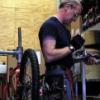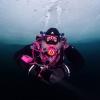I’m considering taking the plunge toward more Tech-oriented diving. Among the gear considerations is
diving doubles. So, my first question is how big should a beginners setup be in terms of tank size? And should I look at aluminum or steel?
I know that if I start getting into large steel tanks that I would have to dive dry due to weight issues and wing size but what about diving wet? What's the max size I should look at?
are there other considerations, too?
Hey FG... long time! haven't read the whole thread, so pardon if I tread where others have been... but the main things I would first consider are what are the intentions or needs for diving doubles and who will you be diving with and what are they using? Do you need more gas or do you need redundancy? Are you diving with an "air hog"? Are YOU an air hog??? (not likely, but to be considered by anyone making such decisions). Understanding your real motivations for diving doubles will help you to make a wiser and less costly choice. I was big into cave and wreck diving up until a couple years ago, now I haven't been in a cave or wreck in almost two years. I have split some of my doubles into singles for use offshore with "H" valves to achieve redundency, needing less extra air than when cave or wreck diving. You might achieve your need by starting with a single with "H" valve and later adding another with an isolator for a doubles set-up. Less investment up front, and less hassle than toting around a set of doubles. Some boat owners don't really like to see doubles on their boats (they tend to create more wear and tear) and you may be more limited than you have considered. When I started in doubles, my goal was training and equiping to dive the Andrea Doria, a five year goal. I knew I wanted to dive cave and had cave diving friends that I would be diving alot with in Florida, so getting set up with doubles pretty quickly made sense for me. However, before I did that, I bought a pair of steel 95's to use while teaching classes as singles. They quickly became my first set of doubles. Being in a cave, my weight issues were not as critical, as I dove dry for redundant buoyancy. Diving "wet" in open water where you may have a long distance to the surface that you cannot get to if bouyancy is lost (some say you can crawl out of a cave if you have to, although I'd hate to rely on that), wearing heavy tanks is discouraged, thinking being you should be able to swim any tanks you wear to the surface when in open water. There are other means for achieving redundant buoyancy, but extra wings and extra-large wings create more drag and air trapping hazards. The issue can become more complex than you might imagine, so knowing what your diving intentions are really helps choose the right equipment, while saving money in the long run.
I hope you have lots of experience, and that you enjoy your expansion into "more technical" diving. Your potential task loading goes up significantly, but your equipment to handle any emergency, once you become accustomed to it, will mitigate most of the problems once you have the training and gain more experience with it. Sheck used to say... there's not a problem in diving you can't handle, if you have enough "air" (gas). That is mostly true, but there are a couple problems even air won't solve!
ITB--




















